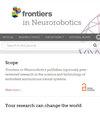Optimization of robotic path planning and navigation point configuration based on convolutional neural networks
IF 2.6
4区 计算机科学
Q3 COMPUTER SCIENCE, ARTIFICIAL INTELLIGENCE
引用次数: 0
Abstract
This study introduces a novel approach for enhancing robotic path planning and navigation by optimizing point configuration through convolutional neural networks (CNNs). Faced with the challenge of precise area coverage and the inefficiency of traditional traversal and intelligent algorithms (e.g., genetic algorithms, particle swarm optimization) in point layout, we proposed a CNN-based optimization model. This model not only tackles the issues of speed and accuracy in point configuration with Gaussian distribution characteristics but also significantly improves the robot's capability to efficiently navigate and cover designated areas with high precision. Our methodology begins with defining a coverage index, followed by an optimization model that integrates polygon image features with the variability of Gaussian distribution. The proposed CNN model is trained with datasets generated from systematic point configurations, which then predicts optimal layouts for enhanced navigation. Our method achieves an experimental result error of <8% on the test dataset. The results validate effectiveness of the proposed model in achieving efficient and accurate path planning for robotic systems.基于卷积神经网络的机器人路径规划和导航点配置优化
本研究介绍了一种通过卷积神经网络(CNN)优化点配置来增强机器人路径规划和导航的新方法。面对精确区域覆盖的挑战以及传统遍历和智能算法(如遗传算法、粒子群优化)在点配置中的低效率,我们提出了一种基于卷积神经网络的优化模型。该模型不仅解决了具有高斯分布特征的点配置的速度和精度问题,还显著提高了机器人高效导航和高精度覆盖指定区域的能力。我们的方法首先是定义一个覆盖指数,然后是一个将多边形图像特征与高斯分布的可变性相结合的优化模型。提出的 CNN 模型通过系统点配置生成的数据集进行训练,然后预测最佳布局以增强导航功能。我们的方法在测试数据集上的实验结果误差小于 8%。结果验证了所提模型在实现机器人系统高效、准确路径规划方面的有效性。
本文章由计算机程序翻译,如有差异,请以英文原文为准。
求助全文
约1分钟内获得全文
求助全文
来源期刊

Frontiers in Neurorobotics
COMPUTER SCIENCE, ARTIFICIAL INTELLIGENCER-ROBOTICS
CiteScore
5.20
自引率
6.50%
发文量
250
审稿时长
14 weeks
期刊介绍:
Frontiers in Neurorobotics publishes rigorously peer-reviewed research in the science and technology of embodied autonomous neural systems. Specialty Chief Editors Alois C. Knoll and Florian Röhrbein at the Technische Universität München are supported by an outstanding Editorial Board of international experts. This multidisciplinary open-access journal is at the forefront of disseminating and communicating scientific knowledge and impactful discoveries to researchers, academics and the public worldwide.
Neural systems include brain-inspired algorithms (e.g. connectionist networks), computational models of biological neural networks (e.g. artificial spiking neural nets, large-scale simulations of neural microcircuits) and actual biological systems (e.g. in vivo and in vitro neural nets). The focus of the journal is the embodiment of such neural systems in artificial software and hardware devices, machines, robots or any other form of physical actuation. This also includes prosthetic devices, brain machine interfaces, wearable systems, micro-machines, furniture, home appliances, as well as systems for managing micro and macro infrastructures. Frontiers in Neurorobotics also aims to publish radically new tools and methods to study plasticity and development of autonomous self-learning systems that are capable of acquiring knowledge in an open-ended manner. Models complemented with experimental studies revealing self-organizing principles of embodied neural systems are welcome. Our journal also publishes on the micro and macro engineering and mechatronics of robotic devices driven by neural systems, as well as studies on the impact that such systems will have on our daily life.
 求助内容:
求助内容: 应助结果提醒方式:
应助结果提醒方式:


